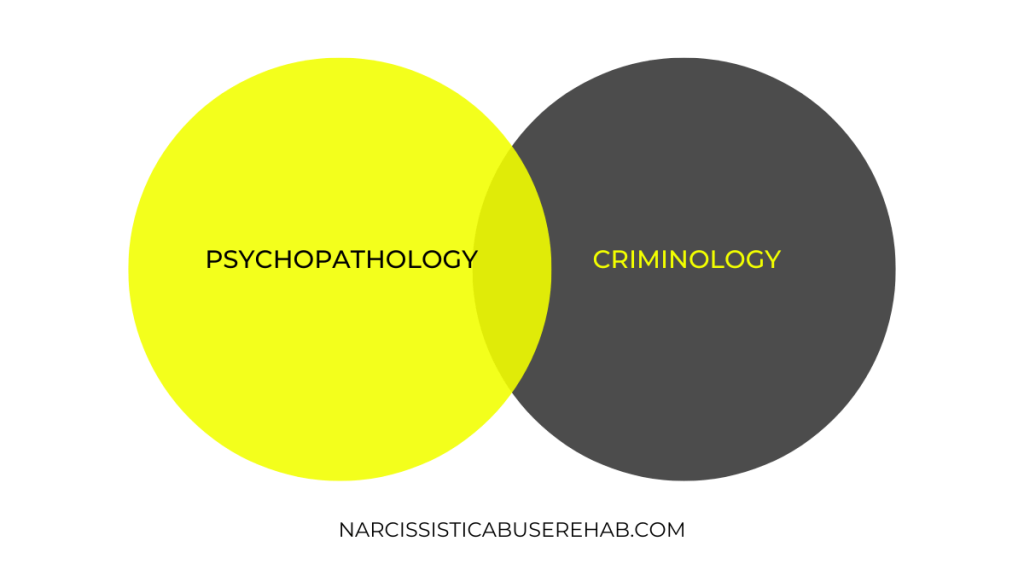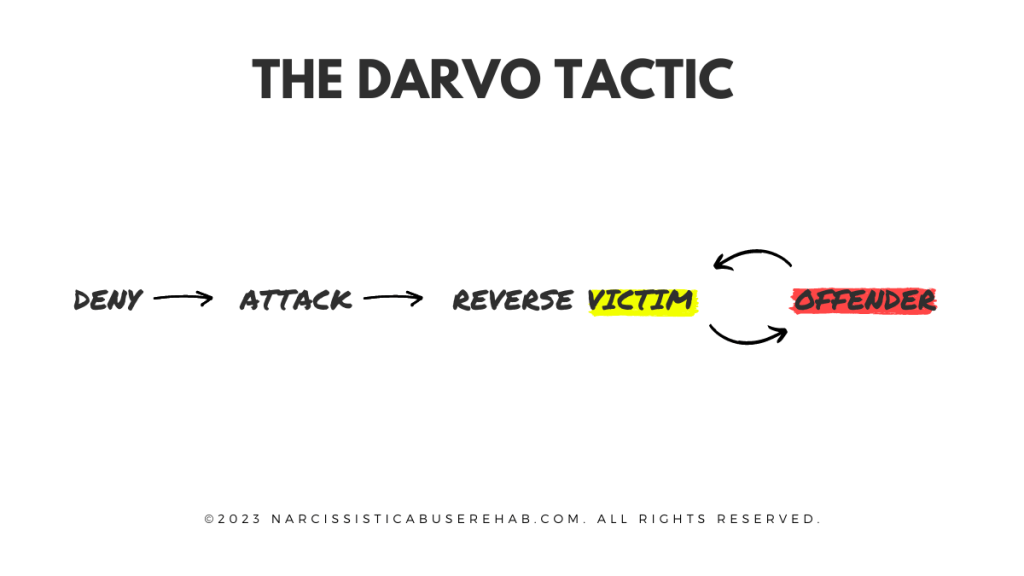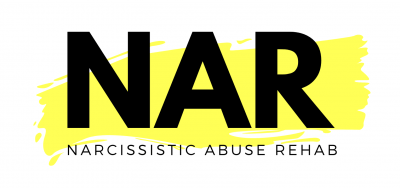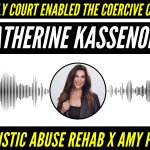I should say upfront I am not in the legal profession, except to the extent I have worked with abuse survivors for three decades in court cases when their partner had a personality disorder, a form of psychopathology, as a support to the survivor. My psychology training was in psychopathology and, later, trauma. I have also had my family court issues with a pathological parent of one of my grandchildren.
To this day, and despite a graduate degree, I find the court system to be non-understandable, an enigma of hypocrisy. Its very design inherently contradicts its effectiveness as a large-scale system. A colleague who provides Pro Se instruction for survivors frequently has to explain to me the ‘structure’ of varying court systems, which honestly, to a rational ‘systems-thinking’ mind, still does not make sense in how big systems ‘should’ operate. Here is my systems-thinking approach to simply and effectively rectify the issues that predominantly occur in family court.
Costly Research, Poor Dissemination: The Troubling Incoherence of the System

One of the non-understandable issues, is that our government, as an over-arching system, has spent billions of dollars to understand offenders and victims. And since it has cost taxpayers billions of dollars, one would think, that investment and knowledge would be disseminated and used in every division of our system it was applicable to. Any corporation that spent billions on ‘research and development’ would cultivate consistency in how that pricey research and knowledge could best benefit every division of their company.
“We can see that understanding dangerous types including their ‘patterns of behavior’ and what they are likely to do, is the whole function of some of our higher divisions in our system of government. But what happens to that prized billion dollar investment in understanding and dealing with dangerous types when the same disorder/person hits our court systems?”
Sandra L. Brown, MA
At the fingertips of our lumbering government system, is information that could greatly transform the horrors of family court. Nothing else is required, except for this monstrous system to simply disseminate and consistently use the information effectively to the rest of the system that also deals with this population.
There are entire catalogues of knowledge about what pathological people ‘do’ in our society created by our own government. For instance, the FBI has by now, spent billions to research and deeply train their agents, on what the disorders and behaviors are of those they are to catch.
The Intersection of Psychopathology and Criminology

The understanding of the overlap of psychopathology (the disorder) and the resulting criminology (the behavior) derived from research and collaboration with other government forensic psychologists, has created their success in ‘criminal profiling.’ The FBI understands what psychopaths are, or anti-social personality disorders, and they use the criteria the American Psychological Association (and other psychological descriptors) created as part of their criminal profiling to catch them by understanding and predicting their ‘patterns of behavior.’
The Federal Bureau of Investigations (FBI)
Quantico, their training program, has recycled this deep and expensive research to also train not just their own agents, but other divisions like law enforcement, detectives, other municipalities, and intelligence officers, not wasting this billion dollar information that has been gathered on pathological disorders and their behavior.
What the government paid for in dangerousness and forensic research and assessments, aren’t used in family court. Diagnosis developed by the APA as a standard both in his disorder, and the trauma disorders created in others from his violence and disorder, is no longer considered.
Sandra L. Brown, MA
Prison, Parole, and Probation (PPP)
In another division of our system, is the Prison, Parole and Probation (PPP) department. They too, understand psychopathology. Similar theories about ‘dangerous’ people that the FBI division used in criminal profiling, extends to the PPP division who houses them once caught. At the PPP, their forensic psychologists specifically trained in psychopathology and criminology, use assessments to identify and diagnosis them. For instance, some prisons ‘house’ the most dangerous (psychopaths, anti-socials, etc.) in higher security areas. Because of their dangerous diagnosis, some of them are sent into special programming or sometimes, they aren’t allowed into other programs because of their dangerousness.
The Effective Use of Criminal Profiling Data

From the very top of our system such as the FBI, CIA and the PPP system, their theories of disorder and harm, rely on the intersection of criminology and psychopathology—the disorders as defined by The American Psychiatric Association (APA). Nota bene: the importance of the APA will become apparent later in this article.
The knowledge of the overlap of psychopathology and criminality is taught to those who work in Probation and Parole services because of the high association between pathology and recidivism. The PPP understands the danger of pathology because they train their personnel accordingly about their own safety and these dangerous types. These are the disorders most known to be violent, crafty, escape, manipulate systems, etc. This part of the system monitors their potentiality of recidivism. Part of the PPP is to estimate ‘risk of release’ in part, from the person’s diagnosis and their history, and from the billion dollar investment of understanding their disorder.
So, we can see that understanding dangerous types including their ‘patterns of behavior’ and what they are likely to do, is the whole function of some of our higher divisions in our system of government. But what happens to that prized billion dollar investment in understanding and dealing with dangerous types when the same disorder/person hits our court systems?
Does the FBI ‘s theory of ‘patterns of behavior’ stand?
Does the PPP usage of the same theory on ‘patterns of behavior’ known as recidivism, also apply to someone else with similar patterns in one of our other systems?
A Hypothetical Scenario: Tank

Let’s say a man known as ‘Tank,’ was the type of personality Quantico studied, understood the modi operandi of his disorder, and what he was likely to do next. ‘Tank’s’ type is also taught in criminology to law enforcement, who identified his likely behavior patterns and caught him. Tank went into the PPP system, where he was finally diagnosed by our paid forensic psychologists. And when he was considered for some type of release, his diagnosis, history, and likely recidivism was considered, and monitored, precisely because he is a danger to society.
“Once aggressive behavior happens in context of custody, a ‘Chinese Wall’ emerges where expensive data and knowledge from our own government investment and from the APA, is no longer used.”
Sandra L. Brown, MA
Up to this point, our higher level systems trained in the overlap of criminology and psychopathology (as defined by the APA), is making decisions about Tank, based on their billion dollar investment into what these disorders do. But shortly we will see that the lower systems, then stop the usage of this critical information and then make decisions about Tank that is completely absent of the understanding that the higher systems used as ‘theory’ and which that theory created the resulting response (or decisions about Tank) of our system.
For instance, Tank, of course, reoffended. When back in criminal court, the court would often take into consideration his diagnosis, the dangerousness/forensic assessments conducted on him, and his history of violence both inside and outside the PPP. Ultimately, the court needs to determine his likelihood of reoffending and his level of dangerousness. His history and file would follow him. Criminology and psychopathology are still a consideration about Tank and his future risk.
The Dangerous Dismissiveness of Psychopathology Indicators in the Family Court System

But Tank is also father.
Despite his violence against others, and usually his wife and children, and despite his documented history while in PPP, all the billion dollar investment of understanding and predicting Tank’s behavior, ends at the door of family court.
The billions of dollars spent by Quantico to ‘know what they will do next’ is not considered. What the government paid for in dangerousness and forensic research and assessments, aren’t used in family court. Diagnosis developed by the APA as a standard both in his disorder, and the trauma disorders created in others from his violence and disorder, is no longer considered.
Tank is the same person with the same disorder—the same type of person studied at Quantico, taught to law enforcement, placed in the PPP system, evaluated for dangerousness by prison psychologists, locked up by the criminal court system, fined with restitution for his victim—until family court.
“The same behavior/person/disorder/diagnosis/history that impacts sentencing guidelines in criminal court, is often not even allowed to be presented in family court”
Sandra L. Brown
What is used as theory, as a measurement of risk, and a predictor of future behavior in the higher systems—the FBI, the PPP, and even criminal court sentencing, is not considered in family court when deciding custody. The whole billion dollar theory and how one must deal with dangerous types, becomes irrelevant. Once aggressive behavior happens in context of custody, a ‘Chinese Wall’ emerges where expensive data and knowledge from our own government investment and from the APA, is no
longer used.
While he might gain new charges in criminal court (especially if the aggression was towards someone OTHER than his wife or kids), often those patterns of continuing behavior and his history of that behavior, are not a factor in custody or visitation—the same behavior/person/disorder/diagnosis/history that impacts sentencing guidelines in criminal court, is often not even allowed to be presented in family court; or if allowed, the rights of parenting supersede the knowledge and experience used in criminal court and the knowledge of the APA of the disorder. The knowledge basis and ‘standards’ used from the top of the system (in criminology and psychopathology), stop at the doors of family court.
The Imperative of a Uniform Approach
Our government ‘systems’ related to pathology, are ‘behavior identification, containment and management’ systems– identifying, tracking, arresting, sentencing, punishing, holding, attempted behavior ‘treatment,’ and release-monitoring. A system that is designed as an ‘identification management system’ for dangerous behavior, should not stop identifying, monitoring, or intervening when the patterns of behavior shift systems—like the courts, and should not stop being monitored if
the court is family court, or when, the behavior is perhaps only revealed in family court, for those who have not had criminal histories.
“The whole system should have the same goals when it comes to dangerous behavior.”
Sandra L. Brown, MA
There exists a ‘response gap’ in not consistently dealing with the person’s ‘pattern of behavior’ that has been dealt with in the other parts of the system. Pathology does not stop being pathological across the hall in family court. The issue is, either the issue of criminology (as a repeating pattern of dangerous behavior) and psychopathology (what the disorder is), from the FBI down through the court systems, is a recognized APA disorder, OR IT ISN’T. It shouldn’t be the standards that are used for Tank at the top of the system, and not consistently used throughout the system.
The whole system should have the same goals when it comes to dangerous behavior, and the ‘system’ should serve a role in identification in any part of the system, even as low as family court, especially since billions have been spent exactly for that.
Non-Violent Psychopathology

There are pathological types that don’t harm through violence but are still pathological and dangerous. This has been widely studied by the FBI as white collar crime. Our federal prisons house (or housed) people such as Bernie Madoff and the Enron executives, who harmed exponentially in other ways. The world’s leading expert on psychopathy, Dr. Robert Hare, wrote about this harm in his book ‘Snakes in Suits,’ as ‘pathology in successful careers that often hides their disorders well.’ Many pathological
types draw the line at physical violence but perpetuate their harm to others (including harm to family members) through other means; and in forensic assessments, can be ‘measured’ as forms of deceit, manipulation, cunningness, callousness, and superficial charm or charisma.
“As a large system of ‘intervention,’ all of our systems should serve a role in identification and should all know, that coercive control produces harm in victims and is a version of ‘dangerous’ behavior the system was created to detect.”
Sandra L. Brown, M.A.
In intimate relationships, this harm is (beyond physical/sexual violence) associated with emotional, psychological, financial, and spiritual coercive control. Coercive control as the foundation from which abusive behaviors emanate, has been written into the definition of domestic abuse/violence in other countries, and into the definition in a few states in the U.S., implying there are other forms of abuse just as traumatizing as physical or sexual violence. Some survivors have pathological partners that weren’t
violent, but harmed in significant ways through coercion, producing trauma in the survivor and children. This expands the ’patterns of behavior’ that our systems, including courts, should factor in since they are dangerous and simply take different presentations depending on their usage and in what victim context. As a large system of ‘intervention,’ all of our systems should serve a role in identification and should all know, that coercive control produces harm in victims and is a version of ‘dangerous’ behavior the system was created to detect.
Refusing the Standards of Higher Systems

But it is not only that the billion dollar knowledge of psychopathology and the APA guidance on the disorders that are ignored in family court, as it pertains to offenders. There are other APA disorders that are recognized by our government systems, that also break down at the doors of family court, as it pertains to victims.
In our overarching system of government, is the Department of Justice. One of the programs/offices that operates under the DOJ, is the OVC, or ‘Office for Victims of Crime.’ Here too, billions has been spent in research, developing programs and services, grant funding for those programs and services delivered by agencies throughout the U.S., expounding the harm of violence, largely based on the APA guidelines of what trauma ‘is’ and ‘does’ to victims.
The Price of the Disconnect
Victimization costs our country billions of dollars every year, and victims have been recognized for needing extensive services that our system feels responsible for creating and maintaining, to meet their need. Domestic violence programs/shelters and child abuse programs exist, largely, from funding from the OVC programs.
Like the FBI, they too spent billions in understanding the trauma victims experience and offer training to programs like domestic violence agencies to help with issues like restraining orders, court advocacy, education, and treatment–to stop the revictimization of victims. These programs and funding came into existence due to the Victim Rights Amendment, to provide certain rights and services to all victims of crime.
The Impact of Incompetence
The lack of usage of the knowledge of a parent’s harmful behavior not only stops at family court, the reversal of the treatment of the victim-parent and children, occurs. Both pathology/harmful behavior and what trauma does, stops being used and applied in family court. For instance, in criminal court, the results from trauma include a wide range of harm because trauma (and PTSD) are known to be an emotional/psychological/neuro-biological/sometimes physical/ injury. Trauma is listed in the Diagnostic Statistical Manual of Mental Disorders (the DSM as a psychological injury) and in the medical International Classification of Diseases (ICD), as a resulting medical condition with psychological components. These classifications in both manuals, should give the courts guidance and in criminal court, ARE used as the basis of knowledge in expert testimony. Expert testimony that is used in criminal court, relies on the DSM/ICD to determine a recognized and standardized condition was
created from harm.
In criminal court, the development of PTSD in a victim, often points to the proof of violence, as usually noted in expert testimony. Criminal courts award victims of violence certain rights, grants victims funding as a crime victim and for treatment, has allowed victims to give impact statements about their abuse and weigh in regarding sentencing, and restitution is often ordered by the abuser and granted for the survivor’s trauma diagnosis.
Family Court Either Ignores or Weaponizes Trauma Research
Across the hall in family court, the DSM/ICD loses validity and the proof of violence from a trauma diagnosis, is rarely considered. The DSM/ICD diagnosis, the experts used, a victim’s documented history of injury by government funded agencies like shelters/programs, has little weight in the determination of not only custody, but future ‘patterns of behavior’ that are deemed so important in criminal court. In the ‘double-bind’ usage of the DSM trauma diagnosis, in one court implies guilt and yet in the other court, implies a victim-liability as an ‘unfit parent.’ Ironically, some of the most research on trauma, has come from our own system—through our Veterans Administration’s studies of trauma and war vets.
Equally, funding provides advocacy so our war vets are not stigmatized from their trauma diagnosis and their rights are protected. In fact, how trauma is viewed on military bases, is that it is uncommon to use a vet’s PTSD ‘against them’ in access to their children, but in our own non-military family courts, the opposite is true. PTSD is used against a parent implying they are unfit. Unless there has been acts of violence to the family, war vets are not automatically assumed to be unfit, but traumatized protective parents are.
“To reverse-engineer DARVO tactics, some mental health professionals took DARVO and made it into a ‘syndrome’ afflicting offender-parents, to convert it from an offender tactic to the errant behavior of protective parents and even the abused children.”
Sandra L. Brown, MA
Trauma in our government funded programs, services, and research means one thing, and in family court, means something else. In some areas, the DSM is used and recognized and in family court, we either ignore it, or have ‘reverse-engineered’ what that trauma means, and we discriminate against the people the whole Department of Justice/Office of Victims Crime was created to help and protect.
APA diagnosis of trauma disorders, that the OFC has spent billions on in research and program development, and that the government funds for victims of violence, is not only often ignored in family court, but ‘double bind’ logic is used in family court. In family court, emotional and psychological injuries (and as a repeating pattern of behavior) is rarely considered in placing a child in the custody of someone with a history of coercive control, that had already led to the adult survivor-parent diagnosed with trauma from the abusive parent’s behavior.
Even with documentation of a criminal case for violence, restraining orders, victim diagnosis, DCF/CPS affirmed cases– in family court they may often not be heard as prior patterns of behavior and danger or it carries little weight. While causing trauma in criminal court is a crime, in family court it is a victim liability—same disorder of trauma, yet two uses of the same data.
While we can see that something ‘distorted’ has happened down the food chain of our ‘system’ related to our family courts, this non-use/misuse of higher systems utilization of the DSM as the backbone for understanding behavior, lapses again in the family court system—this time with the issue of ‘parental alienation syndrome.’
Parental Alienation Syndrome Claims Often Grant Immunity to Abusers
To recap: What isn’t used consistently in family court is the APA recognition of psychopathology in why personality disorders are ‘a lifetime of enduring patterns of behavior’ (APA) that come with a warning, as harmful to others. This is not utilized in understanding a partner’s disorder or without a diagnosis, a partner’s behaviors–and the elevated risk in shared parenting or custody/visitation, or the cycles of violence that are rarely perpetrated on one person only (the other parent) and not the children. What isn’t used in family court is the consistent APA recognition of trauma disorders as evidence of the result of abusive behavior, and that the evidence of trauma in a survivor-parent is a good reason to believe there will be trauma for the children.
It is into this non-usage of APA standards and diagnoses used in other courts but not in family court, that the introduction of Parental Alienation ‘Syndrome’ arrives in family court. While this non-clinical pseudo-science label has existed for a number of years, the APA has refused it as a psychological theory or diagnosis. It is not in the DSM or the ICD. The family court pattern of not using APA standards is instead active, in using non-APA standards and the wide use of this ‘syndrome’ that has been rejected by the APA.
Protective parents who report abuse are not noted as protective (parents as conscientious reporters of abuse towards their children); and the children who report abuse, who are believed, and their trauma noted in criminal court for abuse against them, are instead deemed in family court, to not be traumatized despite often trauma diagnosis. They are instead believed to be rejecting the abusing parent because they were told to.
Parental Alienation Syndrome and DARVO

This tactical approach used in various alliterations such as in rape cases of ‘what was the victim wearing.’ Now called DARVO, it’s application is best traced back to the tactics used by pedophiles that D-Deny A-Attack (the victim) R-Reverse victimization to Offender. Criminal courts that use psychopathology and trauma science, are less influenced by these offender tactics. But in family court, DARVO is masked by hiding beneath the claims of parental alienation—that is simply old as time itself—blaming victims and becoming the victim. To reverse-engineer DARVO tactics, some mental health professionals took DARVO and made it into a ‘syndrome’ afflicting offender-parents, to convert it from an offender tactic to the errant behavior of protective parents and even the abused children.
While an old offender tactic, the family courts have become a DARVO offender too. The non-use of APA theories has created the dynamic in which the courts and court staffs, are active DARVO offenders—refusing evidence and science of DCF/CPS, traumatology science, psychopathology, risk analysis, and cling to equal parenting despite risk.
Recommendations
Our over-arching system who has spent billions on understanding offenders and victims, who have entire government divisions of services and programs, and who have relied on APA theory for their own operations, only applies it to a certain extent in the system; fragmenting in its usage in family court.
If family court was modified to:
- Use available data on offenders
- Use criminology and psychopathology knowledge
- Use only APA recognized diagnoses and theories
- Considered histories of coercive control and resulting trauma in children
- And applied the same consistent identification and response as other parts of the system— it would bring cohesion to a system that is supposed to respond to offenders and victims, even within the context of custody. It would not exist as a ‘maverick division’ of the system, devoid of the theories, diagnoses, and interventions practiced elsewhere in its system.
Trauma and psychopathology considerations would have a place in family court and pseudo junk science would not be admissible as an unsubstantiated ‘syndrome’ pedaled by it’s own maverick industry ‘professionals.’
Either this over-arching system believes in the theories they use elsewhere in their programs and divisions they have invested billions of dollars in, or they don’t. And if they do, they shouldn’t fragment at the door of family court. Tank has the same disorders and behaviors in ALL the systems he appears in.
Learn more
- How Family Court Enabled The Coercive Control of Catherine Kassenoff with special guest Amy Polacko
- The Use of Isolation in Coercive Control
Further Reading
- Miguel Clemente & Dolores Padilla-Racero (2016) When courts accept what science rejects: Custody issues concerning the alleged “parental alienation syndrome,” Journal of Child Custody, 13:2-3, 126-133, DOI: 10.1080/15379418.2016.1219245
- Roy Lubit (2019) Valid and invalid ways to assess the reason a child rejects a parent: The continued malignant role of “parental alienation syndrome”, Journal of Child Custody, 16:1, 42-66, DOI: 10.1080/15379418.2019.1590284
- Douglas, J. E., & Burgess, M. (1986). Criminal Profiling – A Viable Investigative Tool Against Violent Crime. FBI Law Enforcement Bulletin, 55(12), 9-13.






